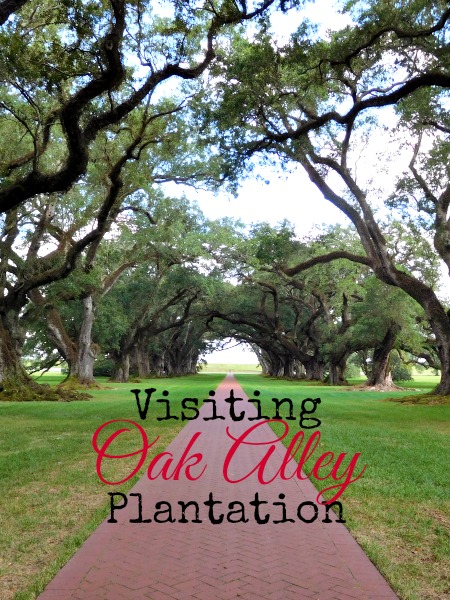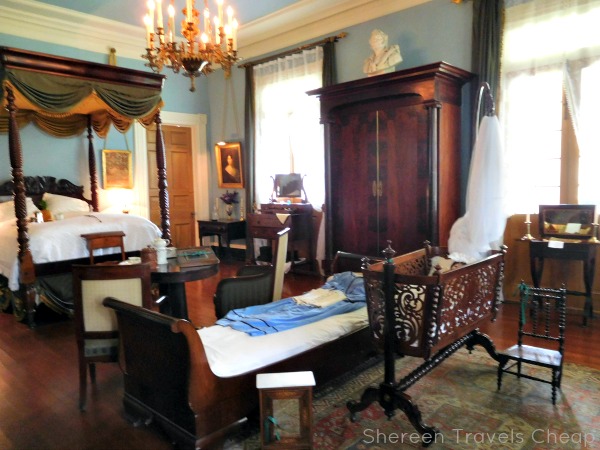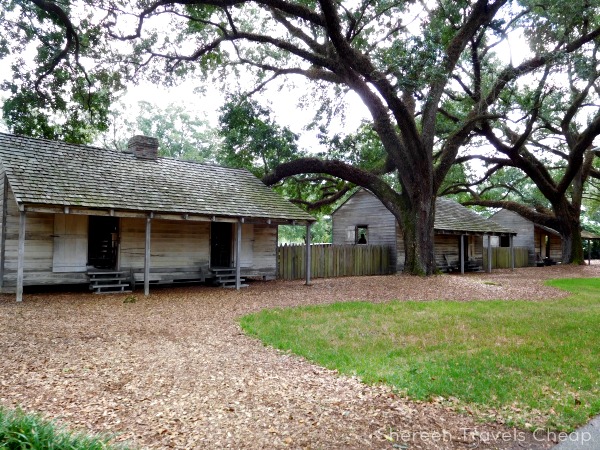Whenever I travel, I look for historical sites to visit. There's nothing more "Louisiana" than plantations. I mean, I know that the French Quarter in New Orleans is basically a whole city of history, but I wanted to explore a plantation. I went online and searched for one of the most popular and everyone agreed that if you only view one, it should be Oak Alley Plantation in Vacherie, about an hour's drive west of Nola.
I know there is a lot of controversy regarding plantations, but there's no denying their cultural and historical significance in the South. I was hoping to learn more about the roles of the slaves in the household and on the property and I was both disappointed and saddened. Obviously, slavery sucked hard, but it was definitely interesting to learn more about the different roles and hierarchy among the slaves in a household, plus their creativity and perseverance. Did you know they raised chickens and gardened to help put a reasonable amount of food on their table? Or that they sold things they grew, like corn, to their owners?
Let's talk about how fantastic the learning experience was: There were two large outbuildings at Oak Alley that housed slaves. These two buildings were basically separated into three two-room cabins, which was home to six families of slaves, each. Now, first of all, these buildings are recreations, so I have no idea if they are as accurate as they could be or if they were even as close to the house when they were actually on the property. Second, the size is horrifying, especially when you saw the different levels of comfort. Could you imagine your whole family living in what may amount to 100 square feet? Some of the rooms had beds and other (sparse) furniture, which would have been cast-offs from the plantation, and others only had a straw-stuffed mattress on the bare floor.
There was a lot of reading, which is great, but I honestly could have done that at home. The tour did not include these outbuildings, only the main house. This was disappointing. The grounds also included a Civil War Confederate Commanding Officer's tent, which you can see below. It was not all that exciting, which I assume is the point, but it's kind of an afterthought in my opinion. I could have done without it. Again, this is not part of the tour. Instead, there was a touchscreen near it to watch a video. I watched part of it, took a few pics and then wandered back up to the house.
We arrived early at Oak Alley (soon after they opened) and took the opportunity to have breakfast at the restaurant, which was actually very good and I hoped it set the tone for the rest of our experience. It may have been the highlight, actually. We had a nice chat with our waitress, who was surprised that we weren't staying at the bed and breakfast, because most people don't show up that early. It's located in one of the original buildings, which is one main house, but divided into four room around a central fireplace. This allowed for them to only build one chimney for the whole house, because it would heat all four rooms. The breakfast menu is limited, but we had the special, which includes two eggs, grits, bacon, Community coffee and toast, biscuit or beignet. It was very good.
The main house tours start every half hour, supposedly, but we were delayed for almost 15 minutes, standing outside, awkwardly taking more pictures or playing on our phones. The centuries-old oak trees that lined the front of the walk leading to the Mississippi were enormous and gorgeous, but there's really only so much you can look at trees.
Once inside, we learned at almost nothing in the home was original. There were four pieces of all three floors that were salvaged. At one point, the home was sold and no one moved in, except for a herd of cattle that made the main house their barn for over a decade. We were told about the original family that lived there, nothing about the slaves that served them, and were herded around to look at probably 6 rooms altogether. The parlour and the dining room downstairs, then the sitting room and a few bedrooms on the second floor. I'd estimate that at least half the house (and the third floor attic) was closed to the public, much having been turned into offices or storage. I found this quite depressing.
Though the rooms we were allowed to see were beautiful, every one of them besides the parlour and the dining, we had to look at from the ropes in front of the door. That's fine, except hard to really look when you're in a group of 30 people and everyone's trying to look at once.
It's also difficult to learn about what you're seeing when everyone is milling around and looking at three rooms at once and the tour guide continues talking. It felt a bit disorganized on the second floor. When a new tour is coming in, you are ushered out onto the wraparound balcony to see the view and hear a little more about the trees and the grounds. You're then walked around the back of the house and ushered back in and down the stairs while the next group is learning about the parlour and the dining room.
While I liked listening to the stories of the family who built and lived in Oak Alley Plantation, I was still put off by the fact that I hadn't actually learned anything about the slaves that served them while they were there (that I hadn't read on my own), and that everything in the house was basically brought in to look like it may have looked.
I've been on other tours of historical buildings, the most recent being the amazing Conrad Mansion in Kalispell (of which I was not allowed to take any inside pictures, because of the fragile decor and furnishings), and almost all of them have been very informative and very thorough. You learned about particular pieces that were used in the home, but also very much about those that worked and lived there.
Oak Alley is beautiful, but for the price of admission, I felt kind of cheated.
I really wish there was more to learn from the docents (called hoop skirts), smaller tour groups and more rooms open in the main house. The gift shop (because there's always a gift shop) seemed more thought out and extensive.
If I were to return, I'd definitely do my research before visiting a different plantation. There are at least four others within the same area. I'm also very glad that I didn't sign up and pay the exorbitant price of a tour from New Orleans, because I didn't even think the price we paid to go on our own was that fair for what we got. Luckily, we also spent the day at the Tabasco Factory and Jungle Gardens in Avery Island, so we didn't waste our rental car on a disappointing day trip. Oak Alley was definitely not worth the splurge.
Have you ever visited a plantation or been highly disappointed in something you really wanted to see/do on vacation?















No comments:
Post a Comment